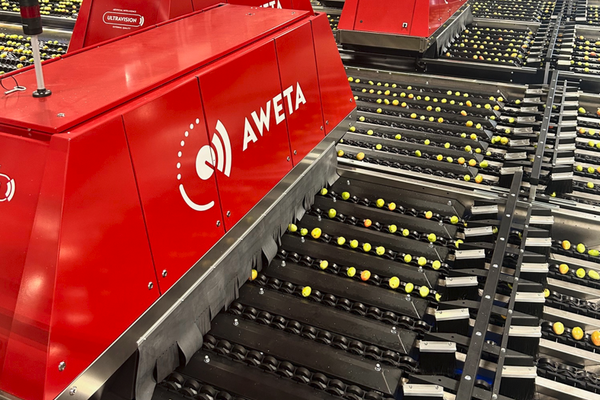There seems to be no stopping technological progress, and the fruit and vegetable sector, too, on both the cultivation and packaging fronts, is jumping on the bandwagon. "We're currently further developing a camera system using AI," says Robert Peters, Aweta's R&D director. This Dutch company focuses on developing advanced systems that use artificial intelligence (AI) to perform complex quality analysis.

The system being developed focuses on grading bell peppers on their exterior quality. Aweta had already applied AI and machine learning to sort apples and citrus. They used a new imaging technique to build a comprehensive database of unblemished and defective products, as well as the different types of defects. A self-learning algorithm uses this database to distinguish between products.
Like Google and Tesla
Robert compares the technology Aweta uses to that of Google and Tesla. The advanced systems Aweta is developing allow them to accurately detect complex defects without sacrificing capacity. To do so, they use the latest generation of CMOS cameras, which provide high-resolution digital images. Aweta has developed a hyperspectral camera setup consisting of a mix of color images and three different infrared wavelengths. It combines the images and uses AI to distinguish all possible defects.
Springs rather than a belt
Along with hyperspectral imaging, other techniques are available, such as X-ray and terahertz imaging, says Robert. However, current quality requirements mean hyperspectral imaging is sufficient to do all the necessary readings. It remains to be seen if other techniques will be needed in the future.
Aweta's bell pepper cup machine can scan five products per second, while a citrus sorting machine processes 14 fruits/second. Robert points out that although you can sort different types of fruits and vegetables on the same line, the products' specific characteristics require customized camera setups. To optimally analyze a product's entire surface, Aweta opts for spring-loaded conveyors instead of a belt. The products can, thus, rotate, making all sides visible to the cameras.
Integrated approach
To remain globally competitive, Aweta invests heavily in continual sensor, camera systems, and software developments. Peters explains that sorting by color is relatively simple, but in-depth quality analysis requires more. You need specialized techniques and AI to detect, say, a bruise on an apple or cut damage on a bell pepper. Besides sorting machines, Aweta also offers 100% integrated solutions, such as container removal, palletizing, and order management. This integrated approach offers added value and can be linked to the customer's ERP system, providing valuable information for the packer.
 Aweta G&P BV
Aweta G&P BV
Kwakelweg 2
2641 WW Pijnacker
T: +31 (0)65 153 44 47
www.aweta.com
Robert Peters
[email protected]
Cecile Plet-Hage
[email protected]
